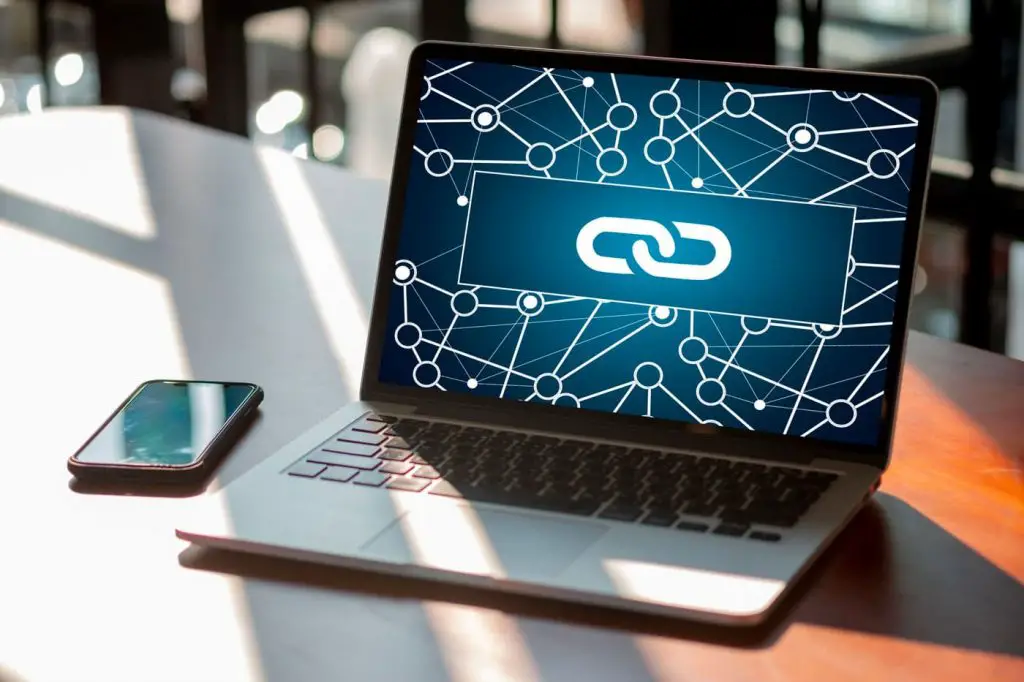Search Engine Optimization (SEO) is a practice that involves optimizing your website’s content to rank higher in search engine results pages (SERPs). One of the most critical factors in SEO is the number and quality of backlinks to your site. In this article, we will discuss how important backlinks are for SEO.
What are Backlinks?
A backlink is a link that points to your website from another website. Backlinks are also called “inbound links” or “incoming links.” Backlinks are crucial for SEO because they are one of the most important factors that search engines use to determine a website’s authority and relevance.
Why Are Backlinks Important
Backlinks are important for SEO because they are a signal of trust and authority. When other websites link to your site, they are essentially vouching for the quality and relevance of your content. This, in turn, helps search engines like Google recognize your site as a credible and authoritative source of information. The more high-quality backlinks your site has, the higher it is likely to rank in search engine results pages.
In addition to improving your site’s authority and relevance, backlinks also help search engines to discover new pages on your site. When search engine crawlers follow a backlink from another site to your site, they can discover and index new pages that they may not have otherwise found.
Types of Backlinks
Not all backlinks are created equal. There are two main types of backlinks: “do-follow” and “no-follow.”
What is a do-follow link?
A do-follow backlink is a link that search engines can follow and count as a point of authority for your site.
What is a no follow link?
A no-follow backlink, on the other hand, is a link that search engines do not count as a point of authority for your site.
While both types of backlinks are valuable, do-follow backlinks are more important for SEO because they pass on more authority and relevance to your site.
What Are White Hat, Black Hat, and Toxic Backlinks?
When it comes to building backlinks for your website, there are two distinct approaches: white hat and black hat. The terms “white hat” and “black hat” refer to the ethical and unethical practices used to obtain backlinks. In this article, we’ll explore the differences between white hat and black hat backlinks.
White Hat Backlinks
White hat backlinks are obtained through ethical means, following search engine guidelines. They are considered legitimate and can improve your website’s search engine rankings without putting your site at risk of being penalized or banned.
Here are some examples of white hat backlink-building techniques:
- Guest posting: Write high-quality content for other websites in your niche and include a link back to your site in your author bio.
- Broken link building: Finding broken links on other websites and offering to replace them with links to your content.
- Link reclamation: Identifying unlinked brand mentions of your website or content and requesting the website owner to link back to your site.
- Content marketing: Creating valuable content that other websites naturally link to.
- Participating in industry-specific forums and online communities.
Black Hat Backlinks
Black hat backlinks are obtained through unethical means and violate search engine guidelines. They are considered illegitimate and can harm your website’s search engine rankings, leading to penalties or even complete banning from search engines.
Here are some examples of black hat backlink-building techniques:
- Buying links: Paying for links to your site, either directly or indirectly, to increase your website’s authority.
- Link exchange schemes: Trading links with other websites for the sole purpose of gaining backlinks.
- Private blog networks (PBNs): Create a network of low-quality websites solely to build backlinks to your leading site.
- Spamming: Placing links in blog comments, forums, or other places solely to gain backlinks.
- Link farms: Creating a group of websites that only exist to link to each other.
White hat backlinks are legitimate and ethical ways of building links to your website that are compliant with search engine guidelines. They help improve your website’s search engine rankings without putting your site at risk of penalties or bans. Black hat backlinks, on the other hand, are unethical and violate search engine guidelines, leading to penalties or even complete banning from search engines. It is essential to focus on white hat backlink-building techniques to ensure long-term success and avoid any negative consequences.
What are toxic backlinks?
Toxic backlinks are backlinks from low-quality or spammy websites that can harm your website’s search engine rankings. These links are considered harmful because they can indicate to search engines that your site is associated with low-quality content or practices.
Toxic backlinks can come from a variety of sources, including:
- Link farms: Websites that exist solely to link to other sites.
- Spammy blogs: Websites that publish low-quality or irrelevant content and are filled with ads.
- Paid link schemes: Websites that offer paid links for the sole purpose of increasing your website’s rankings.
- Irrelevant or low-quality directories: Websites that list a variety of links to other sites, many of which may be irrelevant or low-quality.
- Websites with malware or viruses: Websites that contain malicious software or viruses that can harm visitors to your site.
- Forums and comment sections: Spammy comments or forum posts that include links to your site can also be toxic backlinks.
Toxic backlinks can negatively affect your website’s search engine rankings by causing penalties or even complete banning from search engines. They can also harm your website’s reputation by associating your site with low-quality content or practices.
How to Identify Toxic Backlinks
The first step in identifying toxic backlinks is to perform a backlink audit using a tool like Google Search Console or a third-party tool like Ahrefs or Moz. These tools can help you identify which sites are linking to your site and how many backlinks you have.
Next, you should evaluate each backlink to determine if it is toxic. Look for links from low-quality or spammy websites, irrelevant directories, or forums and comment sections filled with spammy content. You should also check for any red flags like unnatural anchor text, unusually high numbers of links from a single site, or links from non-indexed or non-existent pages.
Once you have identified toxic backlinks, you should take steps to remove them. You can reach out to the website owner and request that they remove the link, or you can disavow the link using Google’s Disavow Tool to indicate to search engines that you don’t want to be associated with the toxic backlink.
Toxic backlinks can harm your website’s search engine rankings and reputation. It’s important to perform regular backlink audits to identify and remove any toxic backlinks from your site. Focus on building high-quality, relevant backlinks from reputable sources to improve your website’s search engine rankings and avoid any negative consequences.
How Do Backlinks Work For SEO?
Backlinks are a main part of search engine optimization (SEO) as they help search engines understand the relevance, authority, and popularity of your website. Backlinks are links that point from one website to another, and search engines use them to determine the quality and relevance of a webpage.
Here’s how backlinks work for SEO:
- Relevance: Backlinks help search engines understand the relevance of your website to a particular topic or keyword. When a website links to your website, it indicates to search engines that your website contains valuable and relevant content related to the topic or keyword.
- Authority: Backlinks also help establish your website’s authority. When high-quality and reputable websites link to your website, search engines consider your website as a valuable resource and increase your website’s authority.
- Popularity: Backlinks also contribute to the popularity of your website. The more high-quality backlinks your website has, the more popular it appears to search engines, and the higher it ranks in search results.
Search engines use backlinks as one of the many factors to determine a website’s ranking in search results. However, not all backlinks are created equal. Search engines prioritize high-quality backlinks over low-quality ones, and some backlinks can even be harmful to your website’s SEO.
In addition, search engines also consider the anchor text used in the backlinks. Anchor text is the clickable text used in a hyperlink, and it can provide context to search engines about the content of the page being linked to.
It’s important to focus on building high-quality backlinks from reputable sources to improve your website’s search engine rankings. This can be achieved through tactics like guest posting, broken link building, link reclamation, and content marketing.
Backlinks are essential for SEO as they help search engines understand the relevance, authority, and popularity of your website. Focus on high-quality backlinks from reputable sources to improve your website’s search engine rankings and drive organic traffic to your site.
What is a high-quality backlink?
A high-quality backlink is a link that comes from a reputable and relevant source that has a positive impact on your website’s search engine rankings. High-quality backlinks are considered to be more valuable and influential than low-quality ones because they indicate to search engines that your website is a credible and authoritative source of information.
Here are some characteristics of high-quality backlinks:
- Relevance: High-quality backlinks come from websites that are relevant to your industry or niche. The content on the linking website should be related to the content on your website, and the backlink should be placed in a context that makes sense for both sites.
- Authority: High-quality backlinks come from websites that have a high domain authority (DA) and page authority (PA). Websites with high DA and PA are considered to be more credible and authoritative, and a backlink from such a website can have a positive impact on your website’s rankings.
- Editorial: High-quality backlinks are editorial, meaning they are given voluntarily by the linking website without any compensation or incentive. This type of backlink is considered to be more trustworthy and valuable to search engines.
- Natural: High-quality backlinks are acquired naturally through link-building tactics like guest posting, broken link-building, and content marketing. They are not bought or exchanged for compensation, which can be a violation of search engine guidelines.
- Traffic: High-quality backlinks can also drive traffic to your website. If the linking website has a significant amount of traffic, a backlink from that site can generate referral traffic to your website, which can be beneficial for your business.
A high-quality backlink is a link that comes from a reputable and relevant source, is editorially given, is acquired naturally, and can drive traffic to your website. These types of backlinks are considered to be valuable for SEO and can positively impact your website’s search engine rankings.
How to Build Backlinks
Building high-quality backlinks is an essential part of any successful SEO strategy. Here are some tips for building backlinks to your site:
- Create high-quality content that other websites will want to link to.
- Reach out to other websites in your niche and ask if they would be willing to link to your content.
- Guest post on other websites in your niche and include a link back to your site in your author bio.
- Participate in online forums and include a link to your site in your forum signature.
- Use social media to share your content and encourage others to link to it.
Conclusion
we discussed the importance of backlinks for SEO and how they work. We also talked about different types of backlinks, such as white hat and black hat backlinks, as well as toxic backlinks.
Furthermore, we discussed what constitutes a high-quality backlink, including relevance, authority, editorial nature, natural acquisition, and potential traffic benefits.
Overall, It is also crucial to avoid low-quality or toxic backlinks, which can harm your website’s SEO and reputation.





